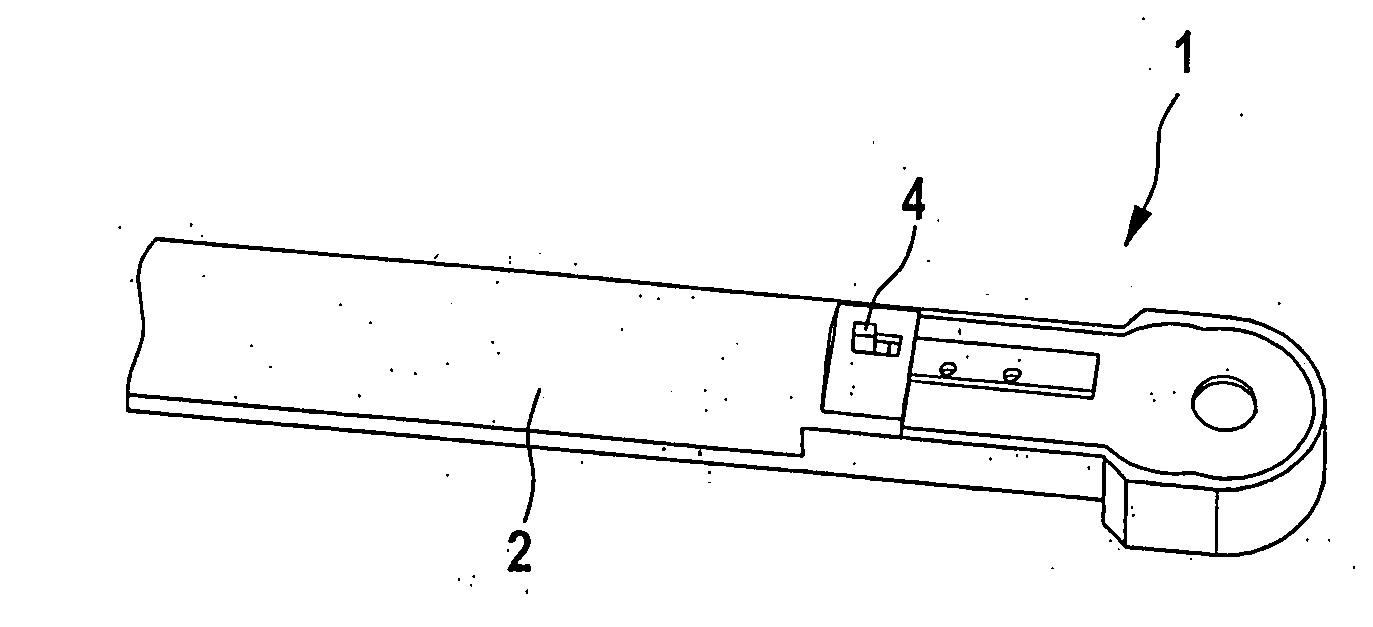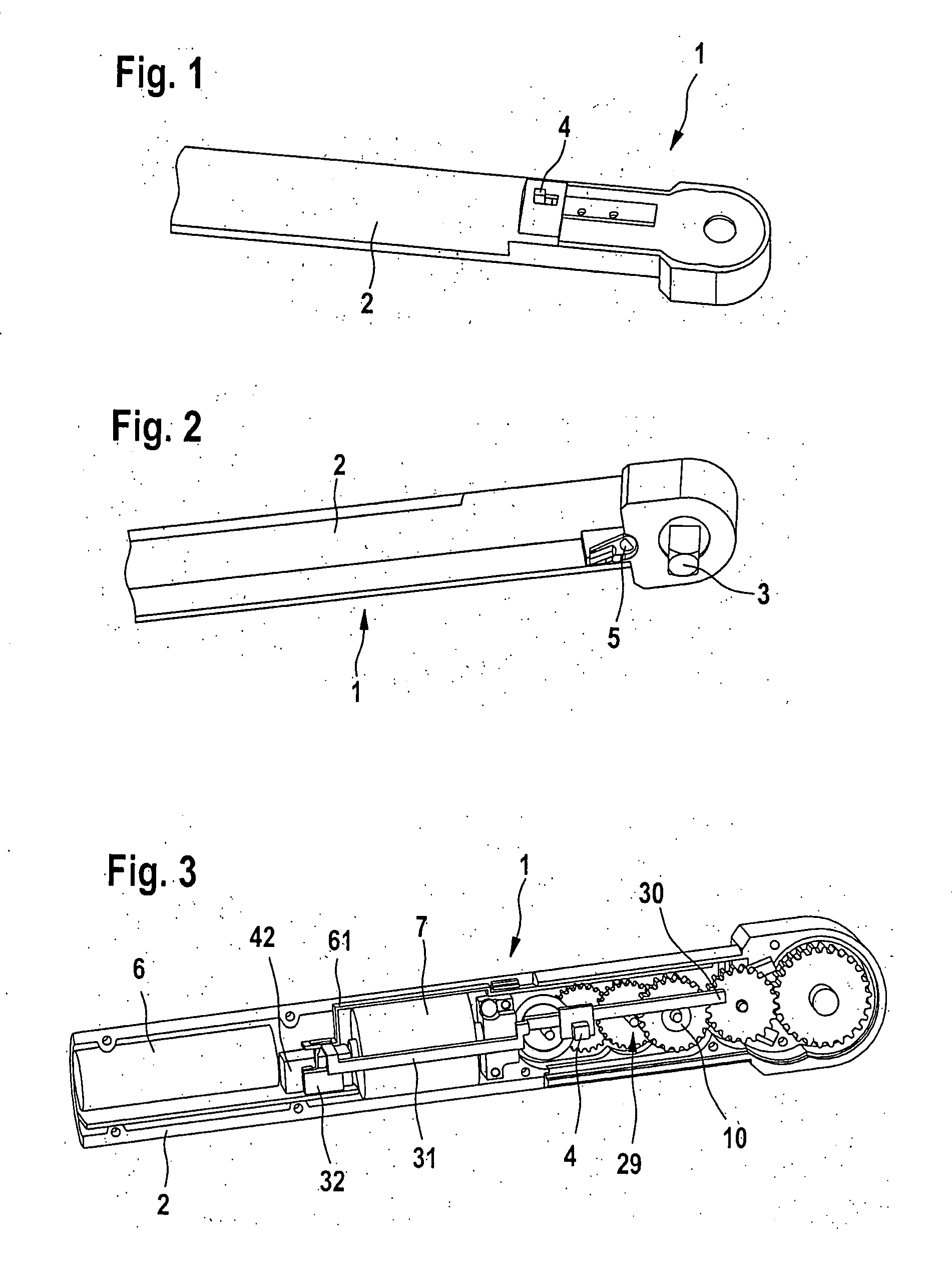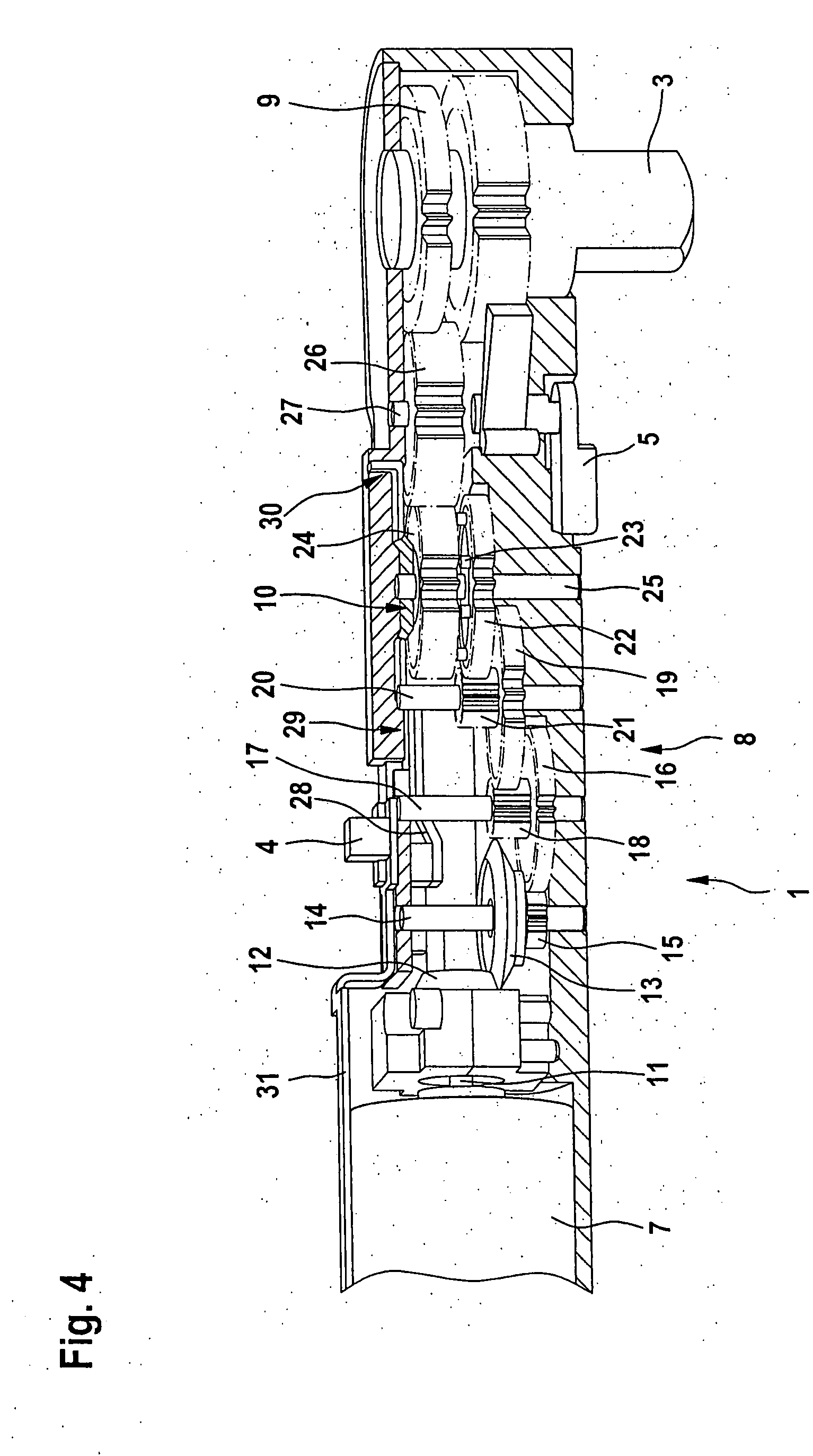Tool ratchet
a tool ratchet and tool technology, applied in the direction of wrenches, power-driven tools, screwdrivers, etc., can solve problems such as electric motor operation, and achieve the effect of preventing damage to components and minimizing wear of coupling components
- Summary
- Abstract
- Description
- Claims
- Application Information
AI Technical Summary
Benefits of technology
Problems solved by technology
Method used
Image
Examples
Embodiment Construction
[0028]A tool ratchet 1 is shown in FIG. 1, in a perspective view from above. Tool ratchet 1 includes a longitudinal handle 2, with which torque may be applied in the circumferential direction to receiving piece 3 shown in FIG. 2. A switch 4 designed as a sliding switch is also shown, with which an electric motor—to be explained below—located inside handle 2 may be switched on and off, and with which a coupling—which will also be explained below—may be engaged and disengaged.
[0029]Tool ratchet 1 is shown in FIG. 2 in a view diagonally from below. A direction switch 5 is located on the underside, with which the direction of torque transfer may be switched. Receiving piece 3 has a square cross section for receiving a socket. Receiving piece 3 may have any type of contour, however, so that it may rotatably actuate pieces that have matching designs.
[0030]The inner mechanisms of tool ratchet 1 are shown in detail in a perspective view in FIGS. 3 and 4. A battery or a rechargeable battery ...
PUM
 Login to View More
Login to View More Abstract
Description
Claims
Application Information
 Login to View More
Login to View More - R&D
- Intellectual Property
- Life Sciences
- Materials
- Tech Scout
- Unparalleled Data Quality
- Higher Quality Content
- 60% Fewer Hallucinations
Browse by: Latest US Patents, China's latest patents, Technical Efficacy Thesaurus, Application Domain, Technology Topic, Popular Technical Reports.
© 2025 PatSnap. All rights reserved.Legal|Privacy policy|Modern Slavery Act Transparency Statement|Sitemap|About US| Contact US: help@patsnap.com



